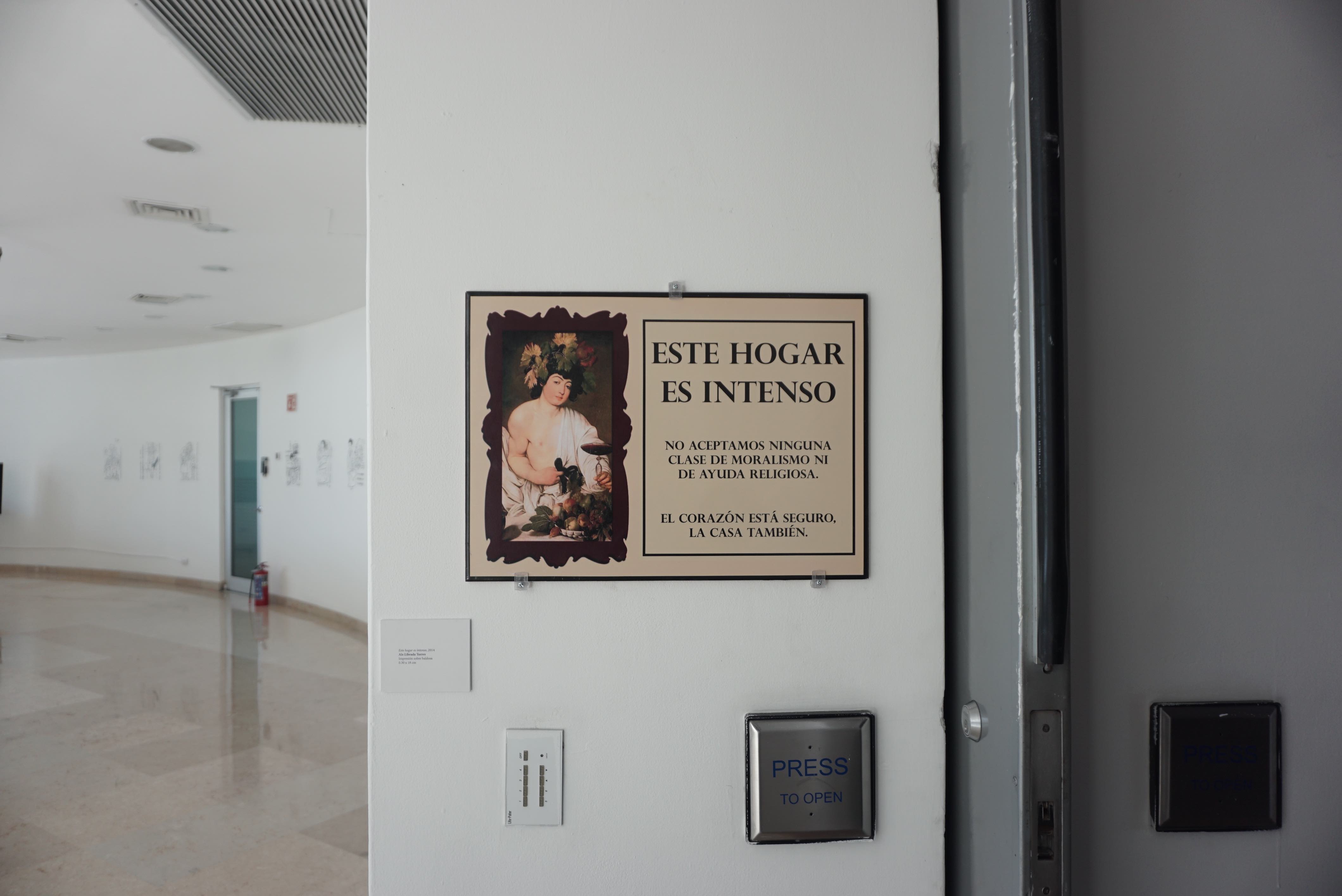
Article
Short trip to the Northwest
by Daril Fortis & Abraham Palafox
Reading time
12 min
This article is a first approach to what is happening in the art scene in Northwestern Mexico. It stems from a desire to understand and make visible the proposals originating from an area outside the territory we have been focusing on (the cities of Mexico City, Guadalajara, and Monterrey), in addition to fostering relationships among different players in the national art ecosystem. It is not about mapping spaces and exhibitions, much less about creating a ranking. What we aim to do is broaden our sensitive horizon.
To achieve this, we have invited two curators to select and write about exhibitions and projects located in Tijuana, Mazatlán, Culiacán, and Hermosillo: Daril Fortis and Abraham Palafox.
Two Islands and a Suite
By Daril Fortis
I was on a trip. I stayed in the Motero Suite and visited two islands, one vacant and another that is not a whale. Both the suite and the islands turned out to be complex universes, connected by disappearing corporealities. A possible uncertainty unites them: what is a trace, a ruin, a footprint?
Una isla vacante [A vacant island] by Mónica Arreola is her first open studio at 206 contemporary art, a space co-directed by her sister Melisa Arreola, which celebrated its eleventh anniversary this year. The exhibition is based on the photographic series Valle San Pedro (2018-2020), documenting the abandonment of the housing development of the same name in Tijuana due to the 2008 economic crisis. This time, Arreola explores other mediums such as writing, video, and sculpture. The series Línea de ruptura [Break line] (2023) stands out the most to me. It consists of three iron sculptures, designed based on the appropriation of signs used in plans to shorten the representation of a long or repeating piece. The material alludes to the metal bars used as protection in homes, and the colors of the sculptures recall the hues in which the houses in the Valle San Pedro housing development were painted. Another piece that captivated my attention was her artist's book Una isla vacante: Valle San Pedro [A vacant island: Valle San Pedro] which brings together a series of architectural signs and representations, fragments of official documents, and texts that evoke a certain corporeality that I cannot see but is undoubtedly present.
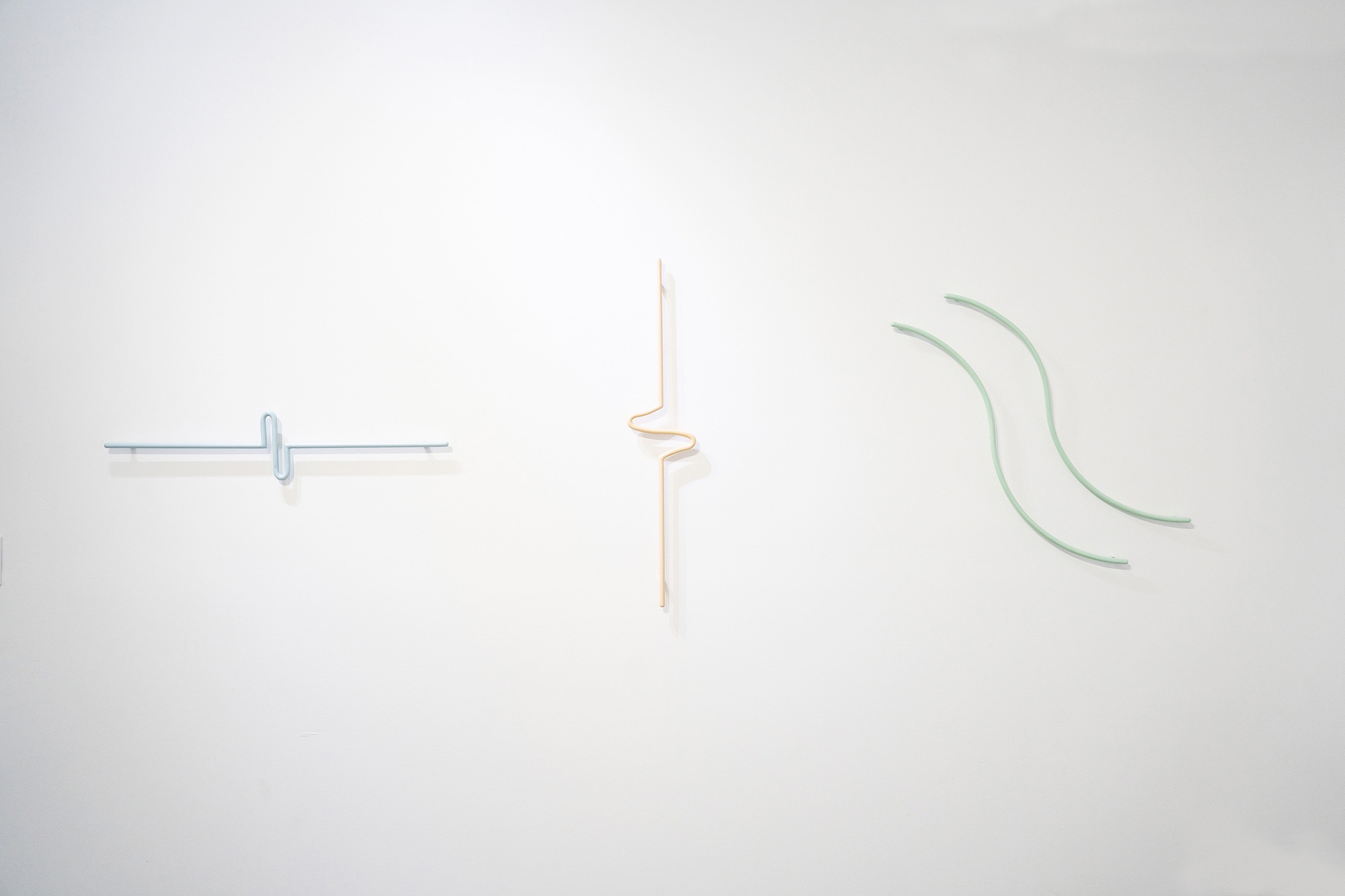
Ninguna ballena es una isla [No whale is an island] by Angélica Escoto is a bestiary composed of a selection of photographs from some of the autobiographical series the artist has developed over the last fifteen years. A bestiary is a medieval book that gathers images and texts describing fantastical animals. Escoto's exhibition, presented at Ángulo Galería—a space with two years of existence, directed by Leobardo García Córdova—depicts the appearance of bodies in the landscape of Baja California. Her body—and that of other women accompanying her—appears fragmented by immersion in water: a head, some legs, the splash of a body I can no longer see but know has crossed the surface of the sea. Some images are accompanied by texts discussing whales and their cruel hunting. It seems that the bestiary actually deals with human horror, a monster of thousands of bodies, with harpoons as nails, thirsty for whale fat and semen. Just like a bestiary that describes sightings and anecdotes, Escoto's exhibition is an accumulation of periods that range from her childhood, with archival photographs, to more recent moments in which she explores her body in relation to the landscape.
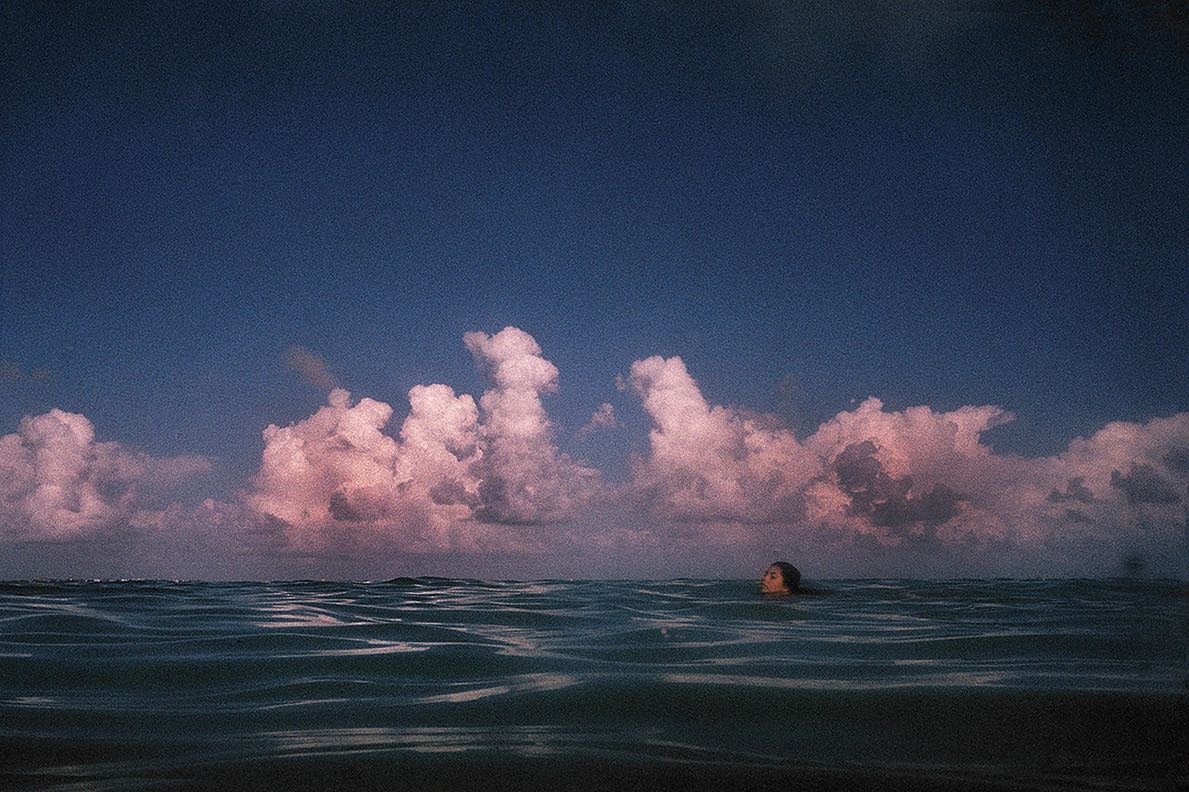
Motero Suite by Andrea Narváez is the result of her residency at Sala de espera/SDE, a peculiar space inaugurated in 2021 in a 1950s abandoned hospital, directed by Luis Alonso Sánchez and Talia Pérez Gilbert. Narváez's room turned into an installation. I see her bed, which is a mattress on the floor, a pink chair, drawings, and other pieces on the walls; her omeprazole, the poppers, and the souvenir T-shirt from her Poppers & bachata party. Motero Tranquilo is Narváez's alter ego, an "indecent, vulgar, and pissed-off" character featured in the video piece Motero x Vanebon. I know there were bodies, Andrea's and Motero's, sharing flesh but distinguished by their performative configurations. The Motero Suite seems extracted from the "hinge worlds," between reality and fiction, that Narváez creates in her audiovisual production. The room-as-artwork coexists with an archive-room inside SDE, which preserves documents in various formats (exhibition leaflets, artworks, books, museographic articles, etc.) from exhibitions and activities held in the space. Both are room-memories that connect me with a variety of apparently absent bodies and times.
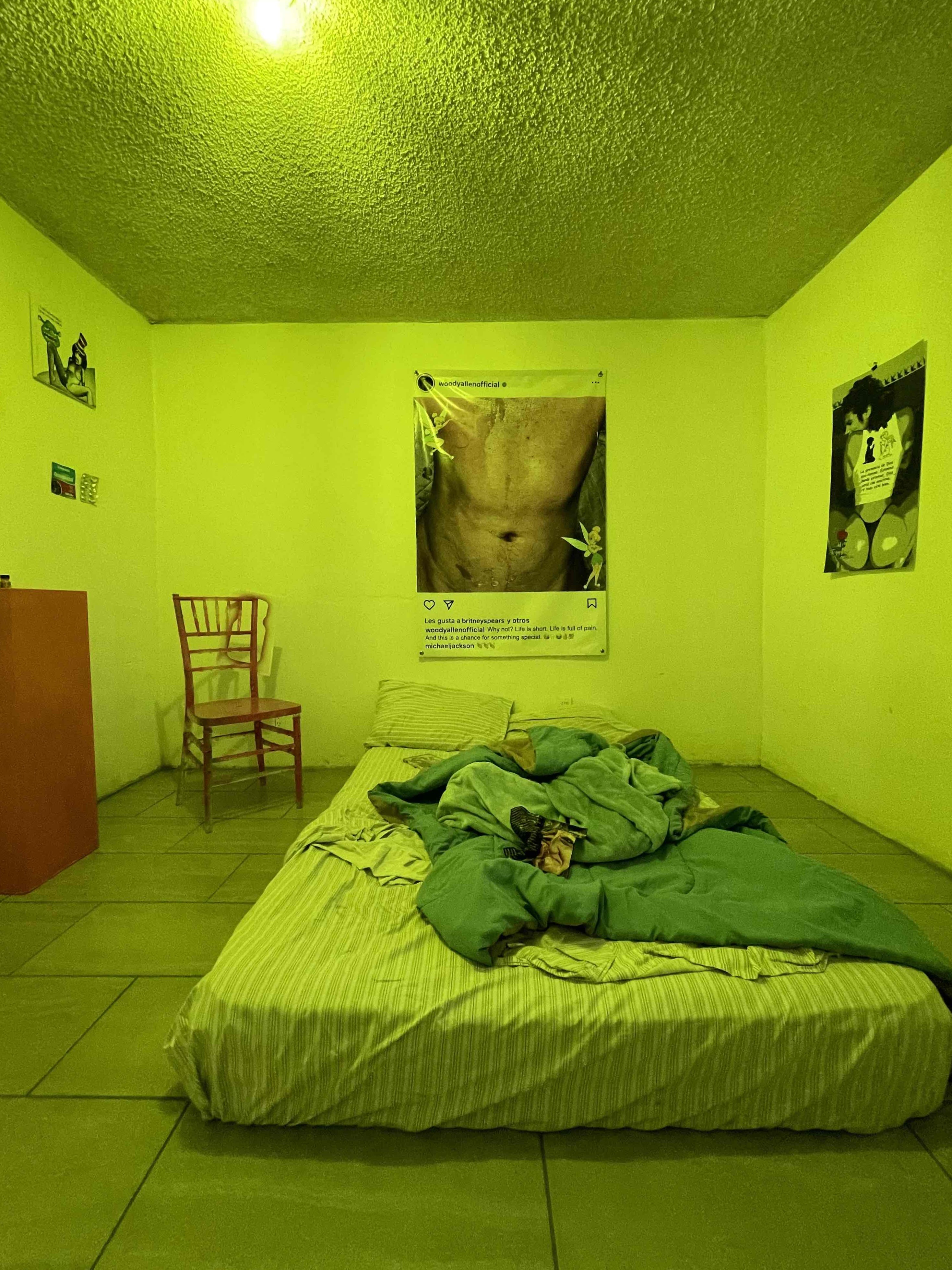
I found objects arranged in particular ways, things that could be ruins or traces, but I prefer to perceive them as portals to other times, mirrors with different faces.
Una isla vacante [A vacant island] by Mónica Arreola (September 27, 2023 - January 27, 2024) en 206 Contemporary Art
Ninguna ballena es una isla [No whale is an island] by Angélica Escoto (October 5, 2023 - November 17, 2023) en Ángulo Gallery
Motero Suite by Andrea Narváez (April 2023) en Sala de Espera/SDE
The Former Western State, Very Much in Its Element
By Abraham Palafox
Sonora and Sinaloa, two states that were once united, offer a variety of projects that, despite climatic adversities and high electricity bills, shine in the region's artistic panorama.
Starting from the southern region, Mazatlán presents the collaborative wandering circle Martes de Surrapas, a project by artists Cy Rendón and Juan Tun Naal, managed by Museo Mampara at Mind Your Head Gallery. The unique support group format it operates with makes it an ideal platform for random musings on topics (that they themselves admit) no one cares about.
Among its sessions, a heated debate stands out regarding the socio-environmental disorder caused by the acapulquization of Mazatlán and the emerging Palazuelos effect with the actors of imminent gentrification. Additionally, a moving review of the life and legacy of Anna Nicole Smith (R.I.P.) as an omen of decadent whiteness. Their work plan includes the formation of the Aguapomo cult, a local creature inhabiting the city's mangroves, accompanied by spiritist sessions to summon artists forgotten by the system and an ambitious regional gathering of Güeros de Rancho. This amalgamation of intentions has led to the formation of parallel programs such as the Film and Cynicism Club and the Marismean Haikus Workshop.

Martes de Surrapas stands as a crossroads of interests where mockery of cultural vices (resulting from the regionalist perspective) and the playful construction of potentially uncomfortable and inappropriate memes abound. However, it aspires to generate, albeit in its early stages, a collective and self-critical spirit, dissolving notions where the artist must be a sort of entertainer or a convincing guru of audiences.
They conclude that their capacity for musing and reveling is proportional to their inability to resolve any topic. In a city known for its overwhelming tourism, this group of artists (and non-artists) has found its own corner of creative chaos worth visiting.
In the central region, in the controversial city of Culiacán (known for being a hub of aesthetic treatments and other things...), we find the exhibition Piel Ajena [Foreign skin] by artist Ana Merino. Sofia Castillo LM curated and produced the exhibition, which is presented at Derma Happenings, inside the dermatological office of the Castrejón sisters.
.jpg?alt=media&token=d5d31341-dcd2-4add-955b-b3c10c5f11c5)
The exhibition showcases a group of paintings and textile compositions that narrate an emancipatory quest against the stereotypical representations of the female body imposed by consumer society. In this series, Merino questions these molds and deconstructs them through a visual journey where her characters shed rigid postures, myths, and the skin of foreign corporeal ideas, merging into a natural landscape under the shade of a mango tree, the tree of her childhood that watched her grow.
This intimate act materializes in serene and meditative compositions, woven with various textiles. An action through which she honors the memory and heritage of her grandmothers, who, through teaching her the craft, opened the door to a language (which is also a refuge) of purity and tenderness. This space is safe and intimate, and the artist recreates it to take control, reaffirm her body, her space, and her identity.
Derma Happenings provide escapes to artistic subjectivities that contrast with the possibility of undergoing a facelift or a slight Botox touch-up... a particular event that only happens in the beautiful and controversial city of Culiacán. A city that positions itself as a new meeting point for creators from the northwest of the country thanks to the annual art fair Todos Ponen Feria, a space that facilitates the connection between artists and the general public, strengthening the interaction between contemporary practices and the regional art market.
In the city of Hermosillo, the MUSAS Museum hosts the retrospective of artist Ale Librada (La Piedad, Michoacán 1985 - Mexicali, Baja California 2020), an exhibition that rejects gender essentialism, moralism, and any religious help or advice from its very entrance.
The exhibition establishes a space where words become a means of containment, protest, and healing against systemic violence such as homophobia, transphobia, xenophobia, and AIDS-phobia, reflecting a strong political stance against such discriminatory structures. Librada employs the subversive and magical function of poetic action to create situations of rupture and reconciliation. In Salvaje Oeste (ya vez panchito) (2010), the artist takes to the streets with a series of banners to challenge the homophobia of the current mayor of Mexicali, B.C. In Principios Básicos [Basic Principles] (2016), she intertwines various feminist announcements with the title of Vicky Car's famous song, Ni princesa ni esclava [Neither princess nor a slave]. In the series Ya no vivo sin ti [I can’t live without you] (2017), she continues with a set of poems that embrace and honor the difficulties of recognizing the (self)stigma of living with HIV. Librada reminds us that in resistance, there are also possibilities of life.
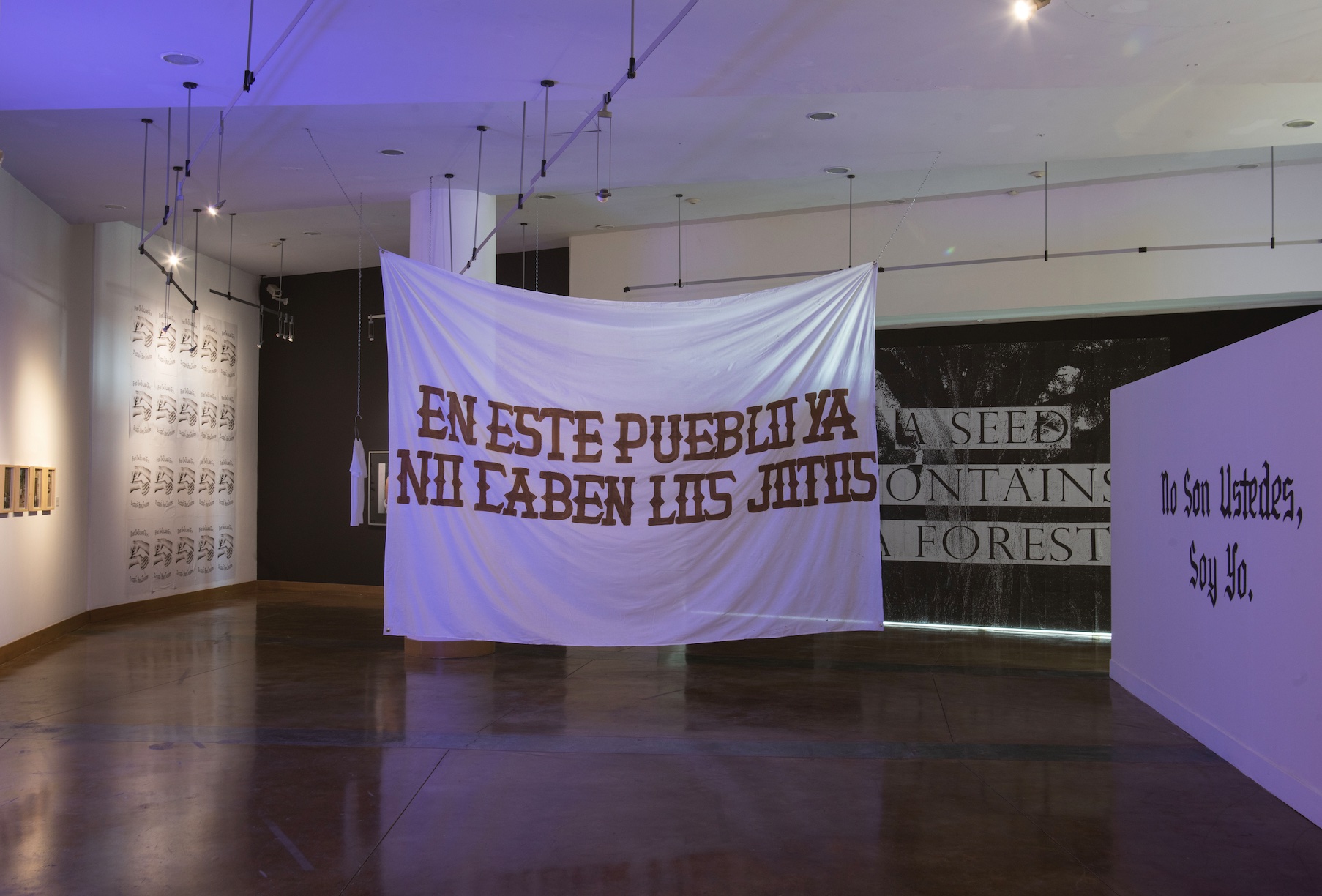
The retrospective gathers pieces exhibited in both national and international galleries, in public spaces as zones of denunciation, in clothing as a means to displace discourses from the body, on websites that function as archives of influences and reflections, and at parties, performative spaces where characters and/or identities (DJ Perla +) emerged, experimenting with musical selections, generating playlists that evoke their interests and are artworks in themselves.
The exhibition is a tribute to her life and work, a project that was carried out thanks to the unwavering support of her family and the curatorial work of the Baja California artist Chantal Peñalosa and myself.
It's worth mentioning that the exhibition also activates the museum's first darkroom in the state of Sonora, a controversial space that replicates the original installation exhibited in Todos somos putos [We are all fags] (2010) at the now-defunct Mexicali Rose gallery and serves as a place to relieve boredom, release tension, and many other things... These three manifestations are just a cultural digest of what is happening in the Former Western State, a beautiful, warm, and intriguing region that is very much in its element today!
Curator Daril Fortis explores the intersection of performative artistic practices, archival practices, processes related to memory, and cultural formation of bodies. He was born in Tijuana, Mexico, where he studied a Bachelor's in Fine Arts at the Autonomous University of Baja California (2015, UABC). He also pursued a specialization in Archival Studies at the Mexican School of Archives (2021) and a master's degree in Sociocultural Studies at the Institute of Cultural Research-Museum (2023, UABC). In 2014, he co-founded the organization Periférica, where he served as program coordinator until its dissolution in 2019. During his coordination, he managed the Hacer Memoria archive, designed the educational program Monitoreo: Program of Contemporary Critique (2017-2019), and co-curated the selection of the guest state (Baja California) for Salón ACME (2018). In 2018, he was selected to participate in the Intensive Curatorial program by Independent Curators International. He has been involved in organizing conferences, meetings, and festivals related to art education, critical reflection on contemporary art, and photography. He has curated exhibitions in various spaces, edited books, and written about art in various publications. Since 2017, he has been researching the history of Tijuana performance art.
Abraham Palafox (Hermosillo, 1988) is an architect and independent curator specializing in visual arts from the University Andrés Bello. He has exhibited in cultural spaces such as the Carrillo Gil Museum, the Musas Museum, and has participated in festivals like the New York Photo Festival and Todos Ponen Feria in Culiacán, Sinaloa. He received the Sonora State Photography Award in 2010 and was part of the artistic residency project "Operador de arte" in Tijuana, Baja California in 2012. He has curated projects such as the group exhibition ¿Podrás? ¡Jamás! held at the Distrito 60 gallery in Hermosillo, Sonora, the exhibition Tengo Luego Existo by Sinaloan artists Lucia Oceguera and Melissa Padilla, and the exhibition Ale Librada: No me arrepiento de nada co-curated with artist Chantal Peñalosa (both exhibitions took place at the Musas Museum in the state of Sonora). He currently lives and works in the city of Culiacán, Sinaloa.
We thank Mino Kiyota from Planta Libre for introducing us to the Northwestern art scene and helping us building these bridges.
Cover image: Ale Librada Torres, Este hogar es intenso, 2014, tile print
Published on November 5 2023